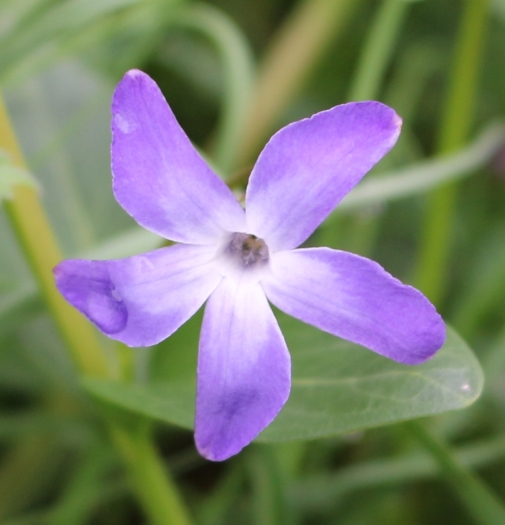Herbaceous Periwinkle
(Vinca herbacea)
Herbaceous Periwinkle (Vinca herbacea)
/
/

Юрий Данилевский (Yuriy Danilevsky)
CC BY 4.0
Image By:
Юрий Данилевский (Yuriy Danilevsky)
Recorded By:
Copyright:
CC BY 4.0
Copyright Notice:
Photo by: Юрий Данилевский (Yuriy Danilevsky) | License Type: CC BY 4.0 | License URL: http://creativecommons.org/licenses/by/4.0/ | Rights Holder: Юрий Данилевский (Yuriy Danilevsky) | Publisher: iNaturalist | Date Created: 2021-04-17T15:22:08-07:00 |
















































Estimated Native Range
Summary
Vinca herbacea, commonly known as Herbaceous Periwinkle, is a deciduous perennial herb native to open woodlands, grasslands, and rocky outcrops in Southern and Eastern Europe, the Caucasus, and the Middle East. It thrives in a variety of soil types, including sandstone and volcanic soils. This plant typically grows to a height of 10–20 centimeters (3.9–7.9 inches) and spreads along the ground, rooting at the stem nodes to form extensive clonal colonies. The leaves are ovate to lanceolate, and the blue-violet or occasionally white flowers, measuring 2.5–3.5 centimeters (0.98–1.38 inches) in diameter, bloom in late summer with a five-lobed corolla that is moderately showy.
Herbaceous Periwinkle is valued for its ground-covering ability, low maintenance, and drought tolerance. It is often used in rock gardens, as border edging, or in underplanting where its evergreen foliage can provide year-round interest. It is best cultivated in full sun to part shade and requires well-drained soil with low to moderate water once established. While it is not prone to serious pests or diseases, it can suffer from root rot in poorly drained soils. Due to its spreading habit, it should be monitored to prevent unwanted naturalization in areas where it can become invasive.CC BY-SA 4.0
Herbaceous Periwinkle is valued for its ground-covering ability, low maintenance, and drought tolerance. It is often used in rock gardens, as border edging, or in underplanting where its evergreen foliage can provide year-round interest. It is best cultivated in full sun to part shade and requires well-drained soil with low to moderate water once established. While it is not prone to serious pests or diseases, it can suffer from root rot in poorly drained soils. Due to its spreading habit, it should be monitored to prevent unwanted naturalization in areas where it can become invasive.CC BY-SA 4.0
Plant Description
- Plant Type: Herb
- Height: 0.3-0.5 feet
- Width: 0.7-1 feet
- Growth Rate: Moderate
- Flower Color: Blue, Purple
- Flowering Season: Spring, Summer
- Leaf Retention: Deciduous
Growth Requirements
- Sun: Full Sun, Part Shade
- Water: Low
- Drainage: Medium, Fast
Common Uses
Bee Garden, Deer Resistant, Drought Tolerant, Groundcover, Low Maintenance, Rabbit Resistant, Rock Garden, Showy Flowers
Natural Habitat
Open woodlands, grasslands, and rocky outcrops in Southern and Eastern Europe, the Caucasus, and the Middle East
Other Names
Common Names:
Scientific Names: , Vinca herbacea, Vinca libanotica, Vinca mixta, Vinca haussknechtii, Vinca herbacea subsp. libanotica, Vinca sessilifolia, Vinca berbacea, Vinca bottae, Vinca herbacea subsp. mixta
GBIF Accepted Name: Vinca herbacea Waldst. & Kit.